Mushrooms are part of the vast, relatively unknown fungi kingdom along with yeasts, molds, mildews, rusts and smuts.
Researchers estimate that over 140,000 species of wild mushrooms thrive worldwide, and around 3,000 of these are edible.
Scientists and researchers classify these mushroom species in several ways. One common classification method relates to how they get their nutrition and what they eat.
When classified in this way, mushrooms fall into one of four groups, and mycorrhizal mushrooms are one of these groups.
In this article, we explore what mycorrhizal mushrooms are, how the mycorrhizal relationship works, common edible mycorrhizal mushroom species and which ones you should avoid.
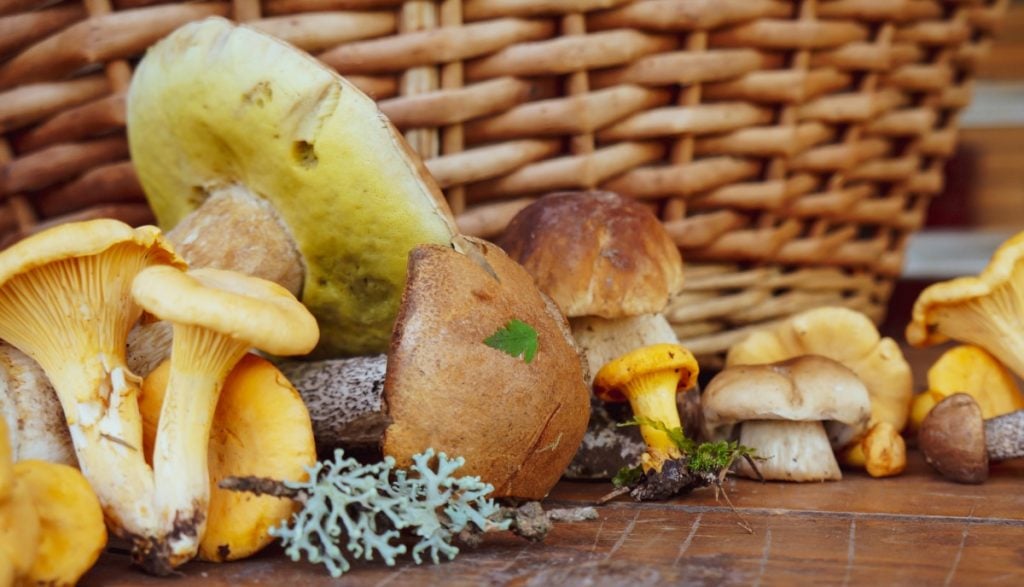
What are Mycorrhizal Mushrooms?
Mycorrhizal mushrooms are mutualistic fungi that form symbiotic relationships with plants and trees.
The fungi use their underground mycelial network to interact with the roots of the plants or trees.
The word mycorrhiza means “fungus root” and comes from the Greek words mykós, meaning fungus, and riza, meaning root.
A mycorrhiza is a mutually beneficial association or relationship between a fungus and a plant.
The plural of mycorrhiza is mycorrhizae or mycorrhizas.
Fungi that form these relationships or associations are known as mycorrhizal fungi.
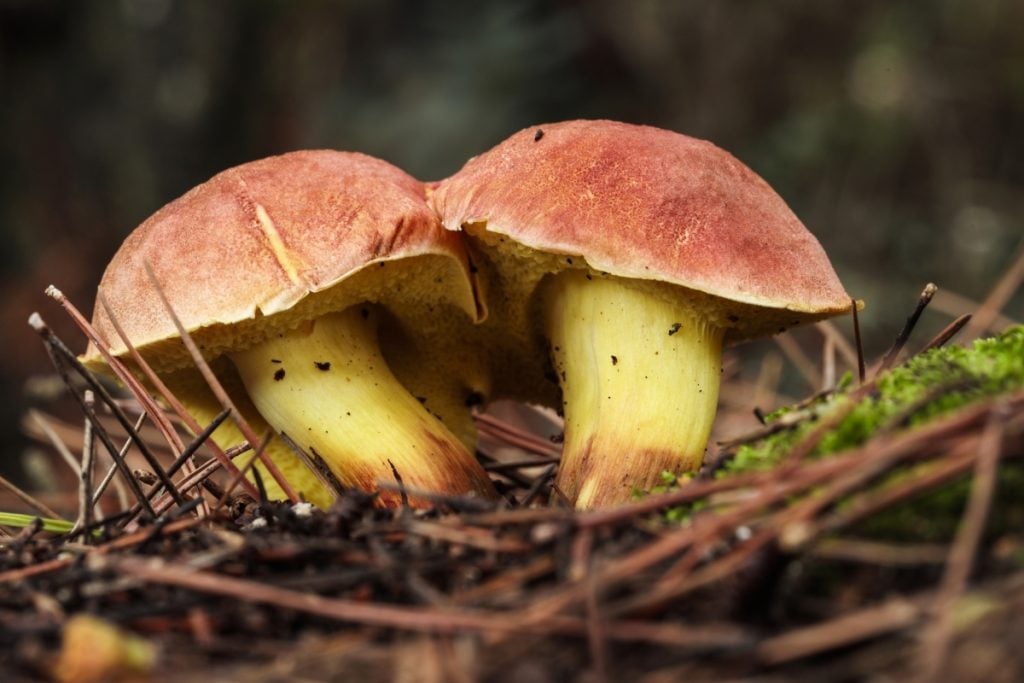
Do Mycorrhizal Fungi Grow Mushrooms?
Some, but not all, mycorrhizal fungi grow mushrooms. The ones that do typically form associations with woody trees and shrubs.
There are two main types of mycorrhizae, called ecto-mycorrhizae and endo-mycorrhizae.
The types of fungi that form endo-mycorrhizal associations inside the cells of many plant roots don’t produce typical mushrooms.
Higher fungi that produce edible mushrooms and truffles form ecto-mycorrhizal associations.
In ecto-mycorrhizal associations the mycelium forms an external sheath around the root’s surface.
The mycelium extends outwards from the roots into the surrounding soil, searching for organic matter and moisture.
Mycorrhizal mushrooms can extend a plant’s or tree’s root system by up to a 1000 times and play a crucial role in forest ecosystems.
Many plants rely on them to access the nutrients they need.

How Does the Mycorrhizal Relationship Work?
Mycorrhizae are mutually beneficial relationships or associations, and both the fungi and the plants benefit.
Although the fungi invade the plant’s roots to absorb nutrients, they also provide many benefits, including:
- Acting as extensions of the tree’s roots and increasing the absorptive area for moisture and nutrients
- Increasing the plant’s chances of survival in stressful conditions such as drought or high temperatures
- Finding and retrieving hard-to-get nutrients such as organic nitrogen, phosphorus, and iron
- Using fungal enzymes to free calcium, magnesium, copper and zinc, making them available for plant use
- Providing extra nutrients in winter when there is less sunlight and reduced photosynthesis
- Creating mycelial networks that connect trees and allow them to exchange nutrients and chemical messages
- Protecting the plant’s roots from bacteria and other organisms that cause disease
Are Mycorrhizae Good for Mushrooms?
Yes, mycorrhizae are good for mushrooms as they get access to the simple sugars that the host plant or tree produces through photosynthesis.
Fungi cannot produce food through photosynthesis and rely on other organisms or decomposing organic matter for nutrients.
Most mycorrhizal mushrooms depend on the sugars they get from plants to meet their energy requirements and will not fruit without a healthy host plant.
Morels are the exception.
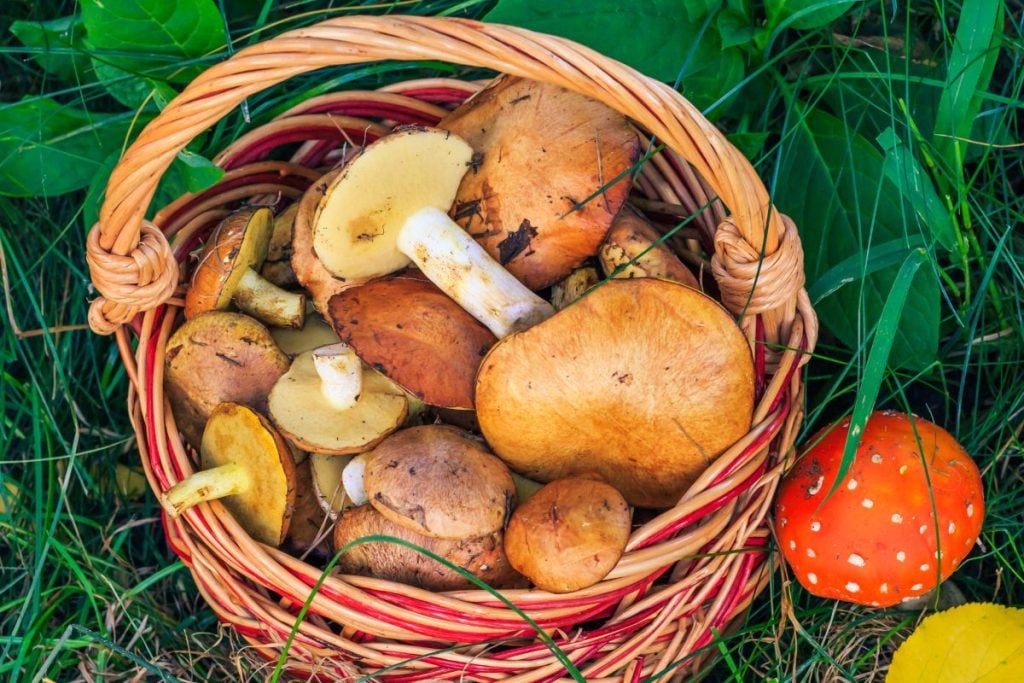
What Mushrooms are Mycorrhizal?
Many of the most expensive and sought-after gourmet mushrooms worldwide are mycorrhizal mushrooms.
These include truffles, matsutake, chanterelles, porcini and morels.
Mycorrhizal mushrooms have complex life cycles and need to partner with specific host trees to thrive, making it difficult to cultivate them.
As a result, you’ll often only find them fresh seasonally in the wild and they’re a special treat.
Are Morel Mushrooms Mycorrhizal?
Yes, morel mushrooms are mycorrhizal, but sometimes they appear saprotrophic.
Some people believe they can be both at different stages in their life cycle.
People often find morels under dead or dying elm and apple trees.
Some think that when the tree is dying, it triggers the morels to fruit and spread their spores to find new healthy host trees.
It would appear that, during this phase,they’re more saprotrophic than mycorrhizal.
Types of Mycorrhizal Mushrooms
Not all mycorrhizal mushrooms are edible, but those that are edible tend to be favorites with mushroom foragers worldwide.
Knowing how to identify trees and which mycorrhizal mushrooms use them as hosts will help you find these delicious mushrooms.
But, some mycorrhizal mushrooms are poisonous, and you should never harvest or eat a wild mushroom unless you are 100% sure of its identification.
If you’re new to foraging, it’s advisable to take along an experienced mycologist or mushroom forager to show you what to look for and confirm identification.
Here’s a list of some common mycorrhizal mushrooms and their favorite host trees.
1. Chanterelles
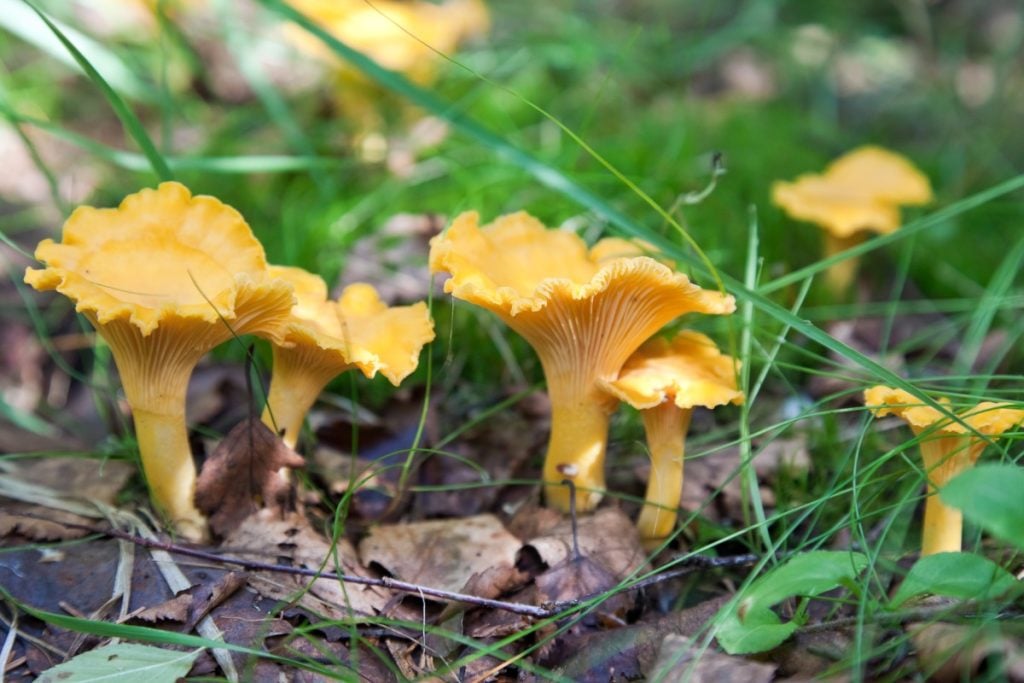
Chanterelle mushrooms are some of the world’s most popular edible mushrooms and include several different species.
They’re trumpet or funnel-shaped mushrooms, often white, yellow, or orange, with a pleasant, fruity smell, similar to apricots.
Chanterelles have been a part of French cuisine for hundreds of years, and chefs particularly prize golden chanterelles for their color and flavor.
What Trees Are Mycorrhizal With Chanterelle Mushrooms?
Chanterelles form associations with many different types of trees, but hardwood trees are their preferred hosts.
Oak, maple, poplar, beech and birch are their favorite host trees, but you’ll also find them around hemlock and pines.
Foragers often find chanterelles near their hosts on the edges of paths or dirt roads or around wetlands, streams, or other damp, low-lying places.
2. Porcini
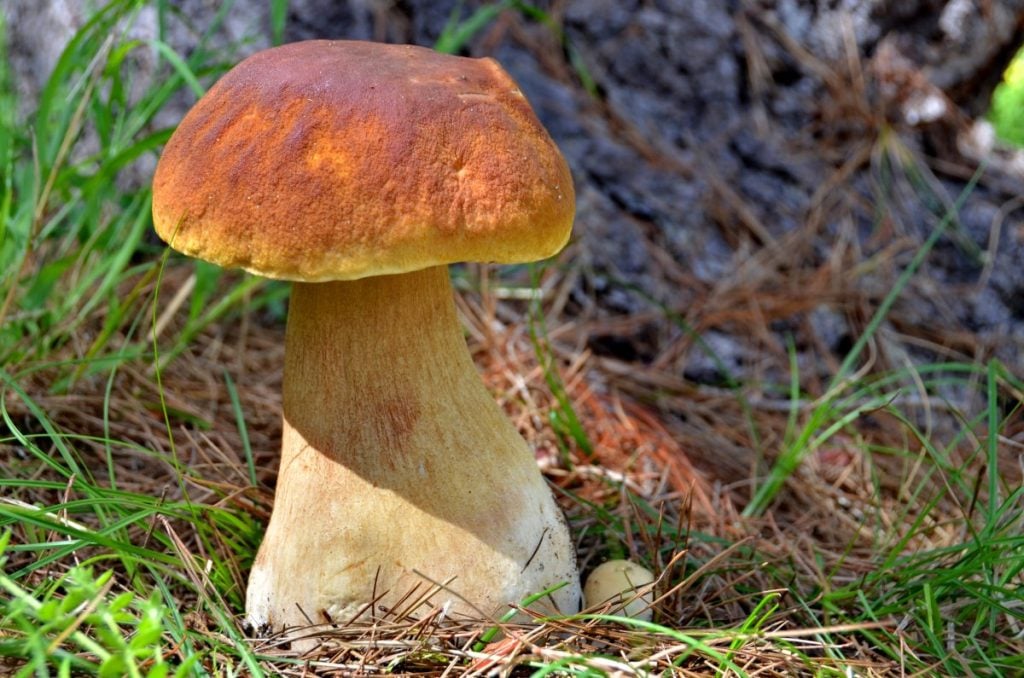
Porcini mushrooms are delicious, meaty mushrooms common in French and Italian cuisine.
Porcini have brown convex caps and thick white stalks and can range from an inch (2.5cm) to almost a foot (30 cm) in size.
Because of this they are sometimes called the king boletus.
Fresh porcinis are a delight usually reserved for use by local chefs as they don’t last long, but you can find dried porcini mushrooms worldwide.
What Trees Are Mycorrhizal With Porcini Mushrooms?
Porcini’s favorite host trees are spruces, but you’ll also find them around other conifers like pine, fir and hemlock.
And, sometimes, although less often, you may find them associated with hardwood trees like birch, beech, oak and chestnut.
3. Hedgehog Mushrooms
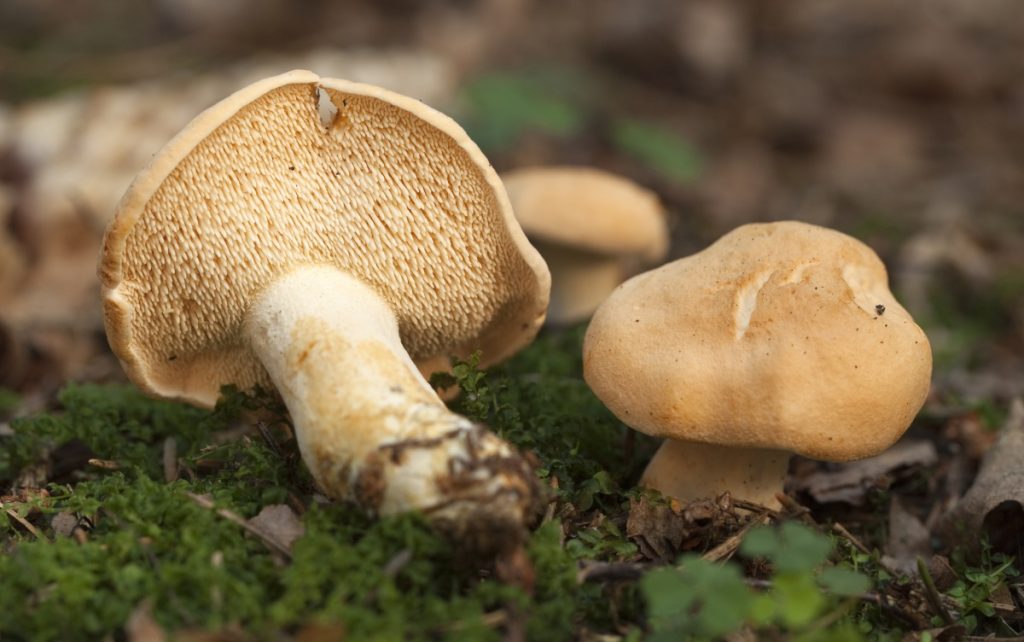
Hedgehog mushrooms are popular and easy for beginner foragers as they have a very distinctive appearance.
They get their name from the short, hanging spines or teeth on the underside of their irregularly shaped caps.
Hedgehog mushrooms have a crunchy texture and a somewhat sweet, earthy, nutty taste.
Many consider them one of the most delicious edible mycorrhizal mushrooms. Comparable in taste to golden chanterelles.
What Trees Are Mycorrhizal With Hedgehog Mushrooms?
Hedgehog mushrooms often form associations with conifers like Scots pine, hemlock and spruce but occasionally use beech, birch and even oak trees as hosts.
They grow well in coniferous and deciduous forests and come up abundantly, scattered singly or in close groups around their host trees.
4. Saffron Milkcaps
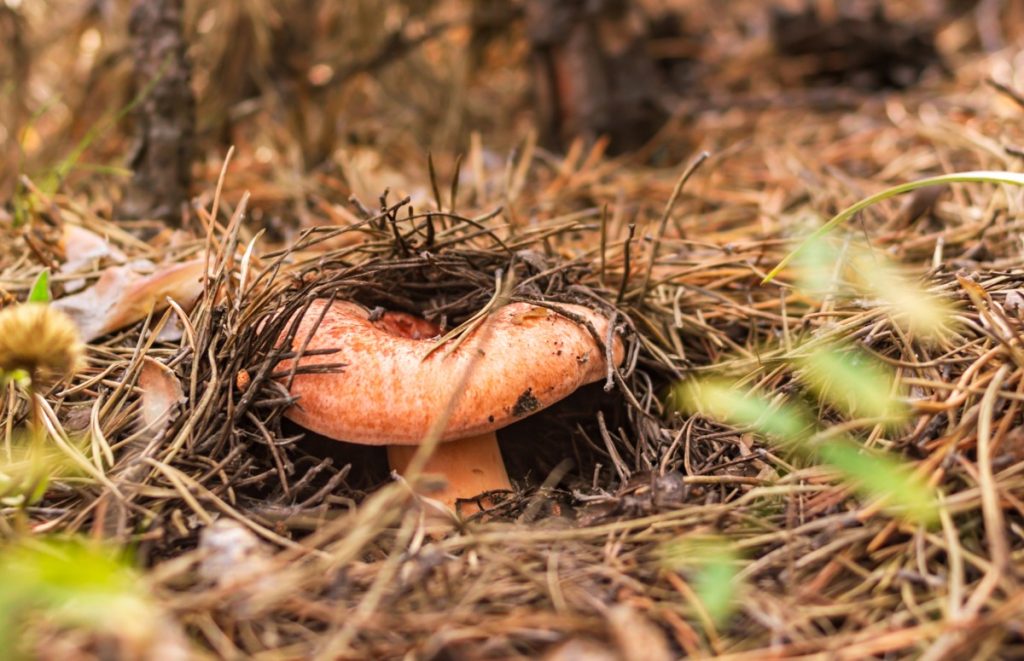
Also known as delicious milkcaps, red pine milkcaps or red pine mushrooms, saffron milkcaps are tasty, crunchy, edible mushrooms.
They’re popular in Spain, and known there as rovellon, or niscalo.
The cap of the saffron milkcap is beige to pinky-orange with faint concentric rings and a depression in the center.
What makes them so distinctive is their orange gills and the orange ring that you see inside the stem when you cut the base off.
What Trees Are Mycorrhizal With Saffron Milkcaps?
Saffron milkcaps form mycorrhizal associations with pine trees, and you will find them in large numbers under pine trees in late summer and autumn, especially after good rains.
5. Matsutake
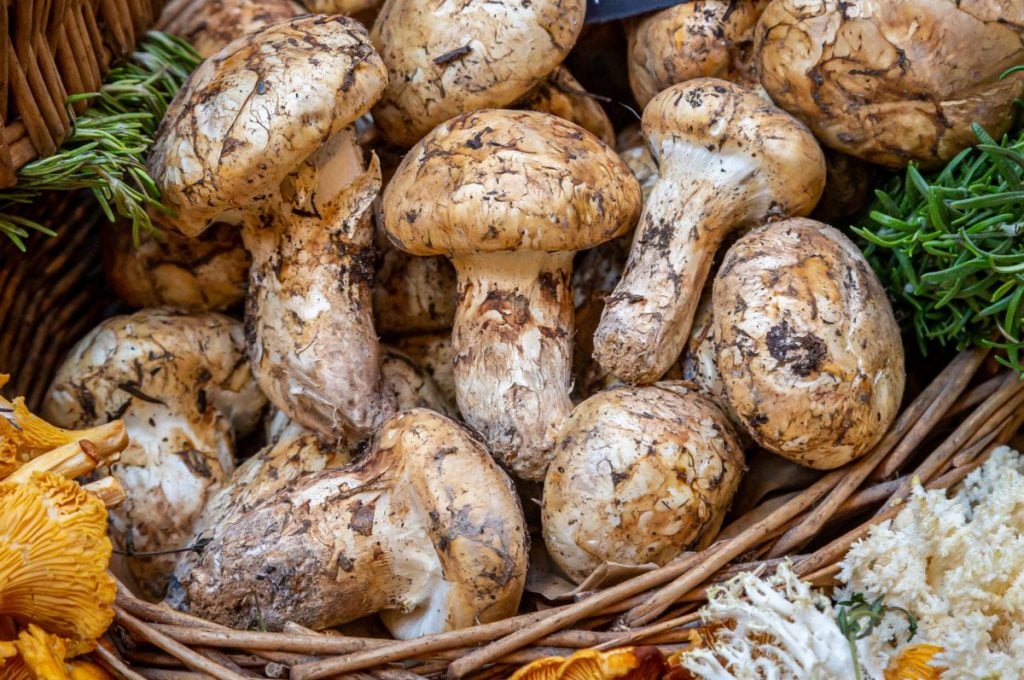
The matsutake or pine mushroom is a prized ingredient in Chinese, Korean, and Japanese cuisine.
Matsutakes have large, white, fruiting bodies covered with brownish patches or scales.
These mushrooms are a favorite among foragers but are often difficult to find as they’re often partially concealed underground.
What Trees Are Mycorrhizal With Matsutake Mushrooms?
The reason matsutakes are known as pine mushrooms is because this is where you’ll most often find them.
They most often form associations with pine trees, but you may find them with other conifers and some evergreen hardwoods.
Matsutake host trees include ponderosa and lodgepole pines, douglas firs, white firs, hemlock, tanoak and madrone.
6. Morels
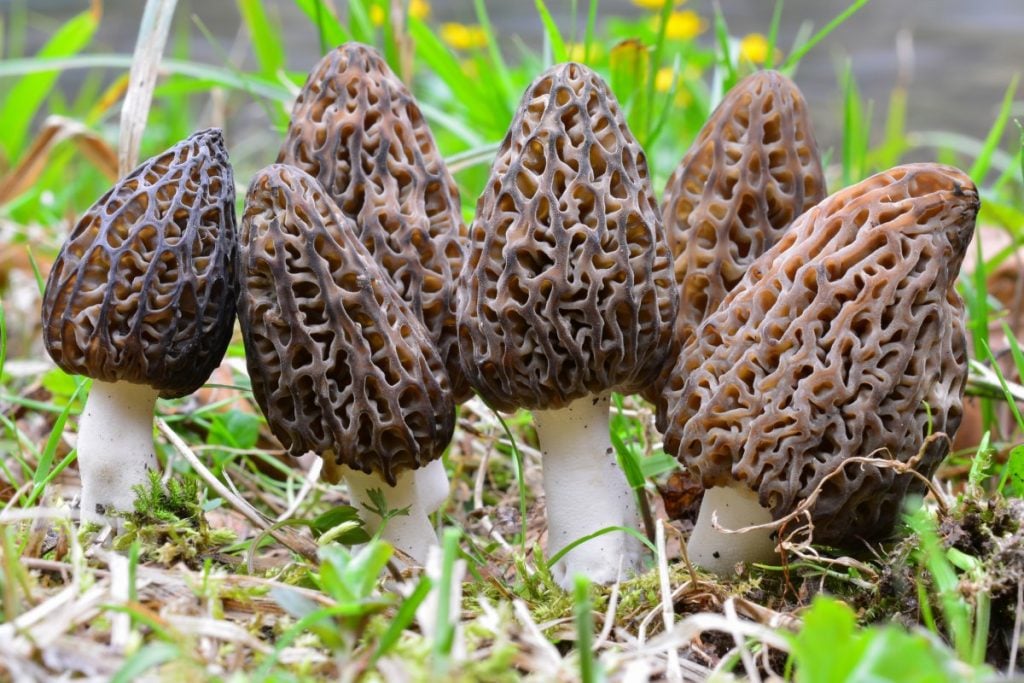
Morels have a unique meaty texture and a nutty yet earthy flavor, and both foragers and chefs prize them.
Considered one of the four easiest mushrooms to identify, they have a distinctive conical cap with a honeycomb texture and a hollow stem.
There are several morels that range in size and color, but they’re all edible, and the only dangerous look-alike is the false morel.
And, if you cut into a false morel, it’s filled with cotton-like white fibers instead of being hollow.
What Trees Are Mycorrhizal With Morels?
Morels are very adaptable and have a mycorrhizal relationship with various tree species.
Favorite hosts are ash, elm, sycamore, apple and wild cherry trees.
But, yellow morels appear to enjoy cottonwoods, tulip poplars and red cedar and you’ll often find black morels in coniferous forests.
7. Fly Agaric

The fly agaric is a beautiful brightly colored poisonous mushroom. This mushroom is the one most people think of when you mention the word toadstool.
Fly agaric belongs to the Amanita family of mushrooms, many of which are very poisonous and some even deadly.
Most common Amanita species are mycorrhizal and form associations with a range of trees.
What Trees Are Mycorrhizal With Fly Agaric?
The fly agaric most often forms mycorrhizal associations with birches, pines and spruces, but you can also find them growing under other hardwood and softwood trees.
Final Thoughts
Mycorrhizal mushrooms have symbiotic associations or relationships with host plants or trees and this is how they get some of their nutrition.
The mushrooms get simple sugars from the trees and, in return, provide the trees with moisture and hard to capture nutrients and minerals.
Mycorrhizae play a crucial role in forest ecosystems, and many trees rely on them to thrive.
Many popular edible wild mushrooms are mycorrhizal, and as they’re difficult to cultivate, they can be expensive.
But there are several delicious edible mushrooms that you can cultivate, and many of them are great for first-time mushroom growers.
To learn more about easy-to-grow mushrooms, visit our Mushroom Growing Hub or try one of our mushroom cultivation courses.
